
Learning About Service Animals
Overview
This lesson introduces anthrozoology, the study of human and animal interactions, with a particular focus on the role of service animals in the lives of people with disabilities. Teachers may want to expand this lesson to further explore the history and science of other animal/human interactions. A follow-up reading and discussion activity for older students provides information on federal laws about services and assistance animals and their use.
Disability Awareness Focus: Animal/Human Relationships.
Grade Level: Primarily elementary and junior high grades, but adaptable for all grade levels.
Subject(s): Reading and Language Arts, Science and Social Studies.
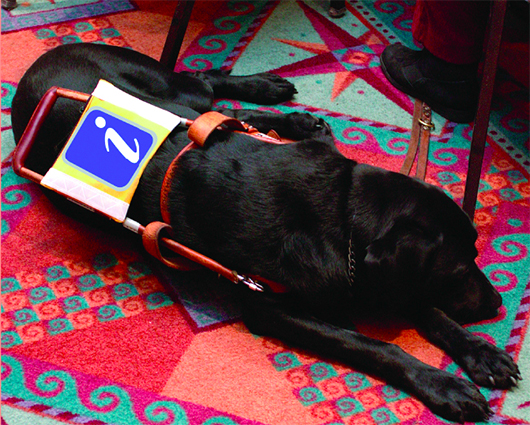
Learning Objectives
- Be able to describe examples of human interactions with other animals and why they are important.
- Understand and be able to explain the work of service animals and their human partners.
- Recognize and describe the importance of service animals as a right under the Americans with Disabilities Act (optional activity for older grades).
- Identify the social and ethical issues involved in relationships between humans and other animals, including service animals.
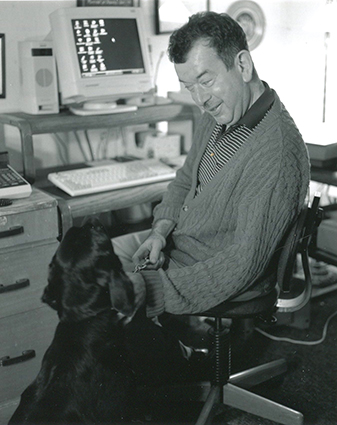
Standards
Follow agreed-upon rules for discussions (e.g., listening to others with care, speaking one at a time about the topics and texts under discussion).
Build strong content knowledge.
Obtain, evaluate and communicate information.
Students explain their own ideas and understanding in light of the discussion.
Review the key ideas expressed and draw conclusions in light of information and knowledge gained from the discussions.
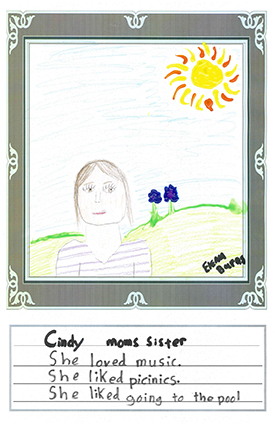
Materials
- Idea Mapping Diagram on whiteboard or flip chart.
- Sticky notes to write brainstormed ideas for group discussion.
- Books and web links (see suggestions below).
- Reading logs and/or storyboards to document key facts and ideas from readings.
- Service Animals and the Law and ADA Fact Sheets for older readers.
Time: Forty minutes.
Setting: Large group discussion and small group activity.
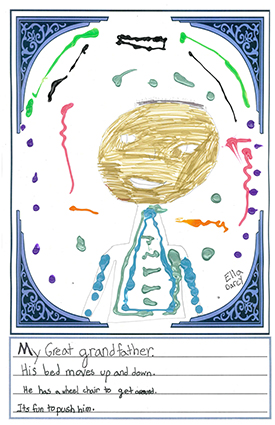
Directions
Lesson Preparation: Review the suggestions listed below and prepare classroom materials as needed. This class can be taught with the focus kept strictly on service animals or it can be taught as part of a larger unit exploring human and animal relationships and interactions. Resources supporting both options are provided.
First Activity (10 minutes): Write the word anthrozoology in front of the class and say it clearly. Ask the students if they have ever heard of this word. Explain that it is the name of a relatively new science, the study of the relationship between humans and nonhuman animals. Scientists and students working in anthrozoology are interested in learning more about how animals and people have lived together, helped each other and influenced or affected each other throughout history. Ask students to share a few examples of human relationships with other animals. Some possible responses are animals as pets, rescue dogs, horse or dog racing, scientific testing on animals, animals grown or hunted for food.
Give students three to five minutes to brainstorm other examples of human and nonhuman animal interactions and put their ideas on sticky notes. This can be done in small groups or as a class.After students complete their brainstorming activity, have them bring their sticky notes on a large flip chart paper or other surface set up as an idea map showing different examples of animal/human relationships. Tell them we are going to explore one example of a human and other animal relationship, the relationship between people and dogs who have been trained as service animals.
Second Activity (20 minutes), Reading for Understanding: Read one of the stories to the class or let students select books to read at their desks or in small groups. Ask them to listen and look for information in the pictures and text that tells them more about why and how service dogs and people work together.
Wrap-Up Activity
Discussion (10 minutes): Bring the class together to discuss the readings and their observations. Here are some possible questions to explore:
- What are some of the different ways service dogs help people with different disabilities?
- What are some things they learned about how service animals and people help each other?
- What can other people do to show their respect for service animals when they are working with someone with a disability?
- What kinds of skills and abilities do dogs and people with disabilities have to learn in order to work together?
- Do you think all dogs make good service animals? What characteristics are important in choosing which puppies might be able to become good service dogs?
- Do you think service animals are a good idea for everyone with a disability? Why or why not? (This is a good time to talk about the responsibility we have when we choose to live with and share our lives with either service animals or pets. It is not something that everyone wants to do or should do. Some people with disabilities may also prefer or find it easier to use other types of assistance.)
- Did anything surprise you in the reading?
- What do you most want to remember from the reading and discussion?
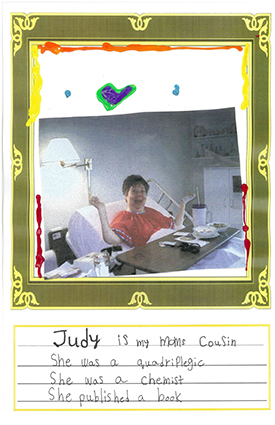
Supplemental Activity
Supplemental Activities
Service Animals and the Law (20 minutes): This activity is for older grades. A fact sheet, Service Animals and the Law, is provided with this lesson. Read this summary to the class or have them read it alone and answer the questions provided.
Reading Log: After reading their selected book, have the students use the reading log, note paper or a pictorial summary to identify and list (or picture) key facts from their reading. If they are reading and working in small groups, students could complete a group summary or picture board of key facts about the work of service dogs.
Writing and Illustrating a Book Report or Research Paper: Students can then write and illustrate a book report on the book they read or a short story or storyboard about humans and animals. Older students could develop a research topic about specific interests relating to anthrozoology, The earlier idea mapping from the class opening exercise may provide a starting point or they could develop their own idea map to develop their ideas.
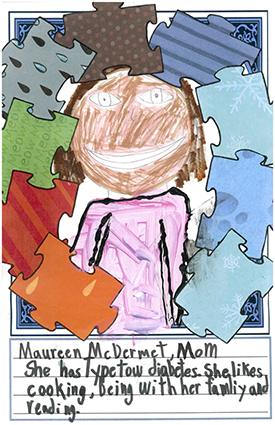
Resources
General Resources
The following list offers books and other resources that may be helpful with this lesson. Your school or town librarian may have other suggestions. (Many of these books are available at libraries or for very low cost secondhand).
Nonfiction and Fiction Books About Service Animals
“Mom’s Best Friend” by Sally Hobart Alexander (Macmillan Publishing Company, 1992). When Sally’s service dog dies, the whole family mourns. Her daughter Leslie tells the story of the loss of a much-loved dog and her mom’s decision to go for training with a new dog who will come home with her. The text and pictures explore the role of a service dog, how both Sally and her new dog learn how to work together and how they live and work together when Sally and her new dog come home.
“Tuesday Tucks Me In: The Loyal Bond between a Soldier and his Service Dog,” by Luis Carlos Montalván (Roaring Book Press, 2014). This nonfiction picture book follows a day in the life of Luis, a veteran and his service dog, Tuesday. When Luis came back from war, he had both a physical injury and traumatic brain stress disorder. Tuesday helps Luis with everyday tasks like remembering to take his medicine, balancing when he goes down stairs, handling the stress of going onto a crowded subway and helping him feel better when he wakes up from nightmares caused by his bad war memories. Text and photographs follow them through a typical day, from getting up in the morning to Luis’ night prayer.
“Looking Out for Sarah,” written and illustrated by Glanna Lang (Charlesbridge, 2003). This story follows Sarah, who lives and works as a musician in Boston, and her guide dog, Perry, from when they start their day in the morning through their walks, train rides and various stops during a working day. It also includes descriptions of the time Sarah and Perry walked 300 miles. The words and illustrations in this book do a good job showing and telling us about their close working relationship.
“Buddy: The First Seeing Eye Dog,” by Eva Moore, illustrated by Don Bolognese (Scholastic, 2003), tells the early history of guide dogs for people who are blind and the story of Buddy, the first seeing eye dog in America.
“My Buddy,” by Audrey Osofsky, illustrated by Ted Rand (Henry Holt and Company, 1992). The narrator, a boy with muscular dystrophy, tells how his service dog, Buddy, changes his life and gives him more independence. As the story is told, readers learn about the role of service dogs and dos and don’ts for relating to a working service dog.
“The Right Dog for the Job: Ira’s Path from Service Dog to Guide Dog,” by Dorothy Hinshaw Patent, with photographs by William Muňos (Walker and Company, 2004). Ira was born on a farm in Montana. As a puppy, he was selected and trained to be a service dog. The book uses photographs and text to tell the story of his experiences learning to be a service dog and then his later training when he learns the additional skills he needs to work as a guide dog for someone who is blind.
Though not specific to service animals, related fiction books for early readers or for reading aloud include “Mandy Sue Day,” by Roberta Karim, with illustrations by Karen Ritz: Karim (Clarion Books, 1994), which uses poems and simple text to give a wonderful nonvisual description of how a girl without sight experiences her relationship with her horse. “The Storm,” by Marc Marshman, illustrated by Mark Mohr (Trumpet Club, 1995), tells and shows how a boy who uses a wheelchair takes care of himself, his dog and the family’s farm animals after an unexpected tornado arrives when he is home alone.
“The Outside of a Horse,” by Ginny Rorby (Dial Books, 2010), is a book for junior and high school students. This novel about a girl who loves horses shows how taking care of horses helps her and her father (a veteran with post–traumatic stress disorder) reclaim their life together after his injury.
Other Books on Animals and Us
The readings listed above focus on formally trained service animals. There is a growing interest in other human/animal interactions, as well as greater understanding of and interest in the ways people and animals have affected each other from ancient times to today. Here are just a few books to consider if you and your class want to explore anthrozoology in more detail:
“Should We Have Pets? A Persuasive Text,” by Sylvia Lollis, with Joyce Hogan and her second-grade class (Mondo Publishing, 2003). Though written for (and with!) a younger age group, this book uses text and illustrations to demonstrate how teachers and students can talk about and evaluate the ethics of our relationship with animals. The process could be adapted to different ages and grade levels.
“Hey, Little Ant,” by Phillip and Hannah Hoose, illustrated by Debbie Tilley (Tricycle Press, 1998), uses pictures and text to take a close-up look at human relationships with the tiny ant and what our responsibility is to animals that are smaller than we are. Music lovers may be interested in learning the song that led to the book!
“Talking Tails: The Incredible Connection Between People and Their Pets,” by Ann Love and Jane Drake, illustrated by Bill Slavin (Tundra Books, 2010). Students who love animals and history will love this book, which explores some of the history of our relationships with other animals and provides some social and scientific information on how pets and people communicate and relate to each other.
“Oh, Rats!” by Albert Marrin, illustrated by C.B. Mordan (Dutton, 2006), tells the interesting, surprising, sometimes alarming and still evolving story of rats and people.
“The Horse and the Plains Indian: A Powerful Partnership,” by Dorothy Hinshaw Patent, photographs by Willia Muňoz (Clarion Books, 2012). An in-depth history of the Plains Indians, showing how the horses that escaped from the invading Spanish in the early 1600s transformed their culture and way of life.
“Out of the Saddle: Native American Horsemanship,” by Gawani Pony Boy, with photographs by Gabrielle Boiselle (Bowtie Press, 1998), shares some of the shared history of Native Americans and horses, tribal values about animal and human interactions and techniques for respectful and successful horsemanship. It includes an Abenaki story, “Gluscbi and the Game Animals.”
“Horse Sense for People,” by Monty Roberts (Viking, 2001), follows his first book, “The Man Who Listens to Horses” (Ballantine, 2008), offering stories and information about the science behind horse and human interactions; and how we can use this information to create more respectful and caring relationships: between people and horses, and between people. Roberts is explicit about his own childhood experience with family violence and the impact that his observations of and experiences with horses has had on his ability to reinvent his life. This book is for adults and high school students. Some of the stories in this book would, however, be great to share with younger students.
Advanced readers may also enjoy reading Temple Grandin’s autobiographical books and learning how her experiences with autism led to a successful career as an animal behavior scientist.
Websites and Information
Students may want to explore different organizations and website that focus on service dogs and other support animals. Examples:
Assistance Dogs International provides information on guide dogs for individuals who are blind, hearing dogs for Deaf individuals, and other service dogs that help individuals with disabilities. For more information, go to: assistancedogsinternational.org/about.
The Animals and Society Institute uses science and knowledge to promote ethical and caring relationships between people and other animals. For more information, visit Instituteforanimalsandsociety.
Purdue University hosts the Center for The Interaction of Animals and Society at Interaction of Animals and Society.
Interested in the new Americans with Disabilities Act definition of service animals and how use of services animals is protected in this law? A fact sheet from the U.S. Department of Justice is included with this lesson. Another fact sheet, Service Animals and the Law, is also provided as a follow-up activity.